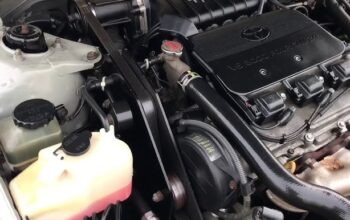Engine mounts play a critical role in securing engines while dampening vibration, absorbing shock, and maintaining proper alignment in machinery. In industrial settings, where performance, reliability, and durability are non-negotiable, choosing the right type of engine mount is essential. Among the most common materials used in engine mount construction are rubber and polyurethane. Each offers distinct advantages and limitations, particularly when applied to industrial environments such as manufacturing facilities, construction sites, and energy production platforms.
This article provides a detailed comparison between rubber and polyurethane engine mounts, helping engineers, maintenance professionals, and industrial operators make informed decisions for specific use cases.
When selecting the right engine mount, material selection is just as important as sizing or design. Mounts must withstand intense vibration, resist chemical and thermal degradation, and provide consistent performance over long periods. This is where understanding the differences between rubber and polyurethane becomes vital.
What Is a Rubber Engine Mount?
Rubber engine mounts have been the industry standard for decades. They are typically made from natural or synthetic rubber compounds and are valued for their excellent vibration-damping capabilities. In industrial settings, rubber mounts are often preferred for applications where isolating vibration is more critical than load-bearing precision.
Advantages of Rubber Mounts
- Superior Vibration Isolation: Rubber is flexible and soft, making it highly effective at absorbing low- and mid-frequency vibrations. This is especially useful in settings where operator comfort or precision instrumentation is involved.
- Cost-Effective: Rubber mounts are generally more affordable than their polyurethane counterparts, making them suitable for high-volume or budget-sensitive installations.
- Quieter Operation: Rubber’s ability to absorb sound and movement contributes to reduced noise levels in industrial machinery.
Limitations of Rubber Mounts
- Shorter Lifespan: Rubber tends to degrade over time when exposed to oil, heat, UV radiation, and chemicals—common elements in industrial environments.
- Compression and Sagging: Under heavy and continuous load, rubber mounts can lose their shape and effectiveness, leading to engine misalignment or increased vibration.
- Limited Customization: Rubber compounds offer less versatility in hardness and durability customization compared to polyurethane.
What Is a Polyurethane Engine Mount?
Polyurethane mounts are made from thermosetting polymers that can be tailored for specific applications. Unlike rubber, polyurethane offers a wide range of hardness levels (measured in durometers), allowing for more precise tuning of performance characteristics.
Advantages of Polyurethane Mounts
- Higher Durability: Polyurethane is more resistant to oil, grease, chemicals, and UV exposure, making it suitable for extreme industrial conditions.
- Load-Bearing Capacity: Polyurethane offers improved structural integrity and load-bearing performance. This makes it ideal for heavy machinery with high torque engines.
- Longevity: These mounts retain their shape and performance over longer periods, even under continual stress.
- Customization: Manufacturers can design polyurethane mounts with specific hardness and damping properties, allowing them to be tailored to particular applications.
Limitations of Polyurethane Mounts
- Higher Cost: Polyurethane mounts tend to be more expensive, especially when custom-designed or used in specialized equipment.
- Increased Vibration Transfer: Compared to rubber, polyurethane is stiffer, which may result in more vibration being transmitted to the equipment frame or operator cabin.
- Noisier Operation: The reduced damping capacity can lead to increased operational noise, which may be a concern in certain settings.
Choosing the Right Mount for Industrial Applications
Selecting between rubber and polyurethane mounts depends largely on the unique requirements of the machinery and the environment in which it operates. Below are some key industrial considerations:
Vibration Sensitivity
If your machinery must minimize vibration for accuracy (such as in manufacturing robots or lab equipment), rubber may offer a better solution due to its superior vibration isolation.
Environmental Exposure
For applications in harsh settings—like oil rigs, marine equipment, or chemical plants—polyurethane mounts are more resistant to environmental degradation and offer longer service life.
Load and Torque Requirements
High-performance diesel engines or large mechanical systems often demand the strength and rigidity provided by polyurethane mounts. Rubber may compress under these loads, leading to reduced reliability.
Maintenance and Replacement Cycles
In operations where minimizing downtime is critical, polyurethane mounts may be preferred due to their longer life and better resistance to wear. However, in settings where mounts can be replaced regularly without disrupting operations, rubber may be a cost-effective choice.
Final Thoughts
Understanding the differences between rubber and polyurethane engine mount materials is essential for ensuring machinery runs smoothly, safely, and efficiently. Rubber mounts are ideal for applications where vibration isolation and cost are top priorities, while polyurethane mounts are better suited for high-stress environments that require durability and precision.
Ultimately, the best choice depends on the specific industrial context, operating conditions, and performance expectations. By carefully weighing the strengths and limitations of each material, you can optimize engine stability, reduce maintenance costs, and extend the operational life of your industrial equipment.




